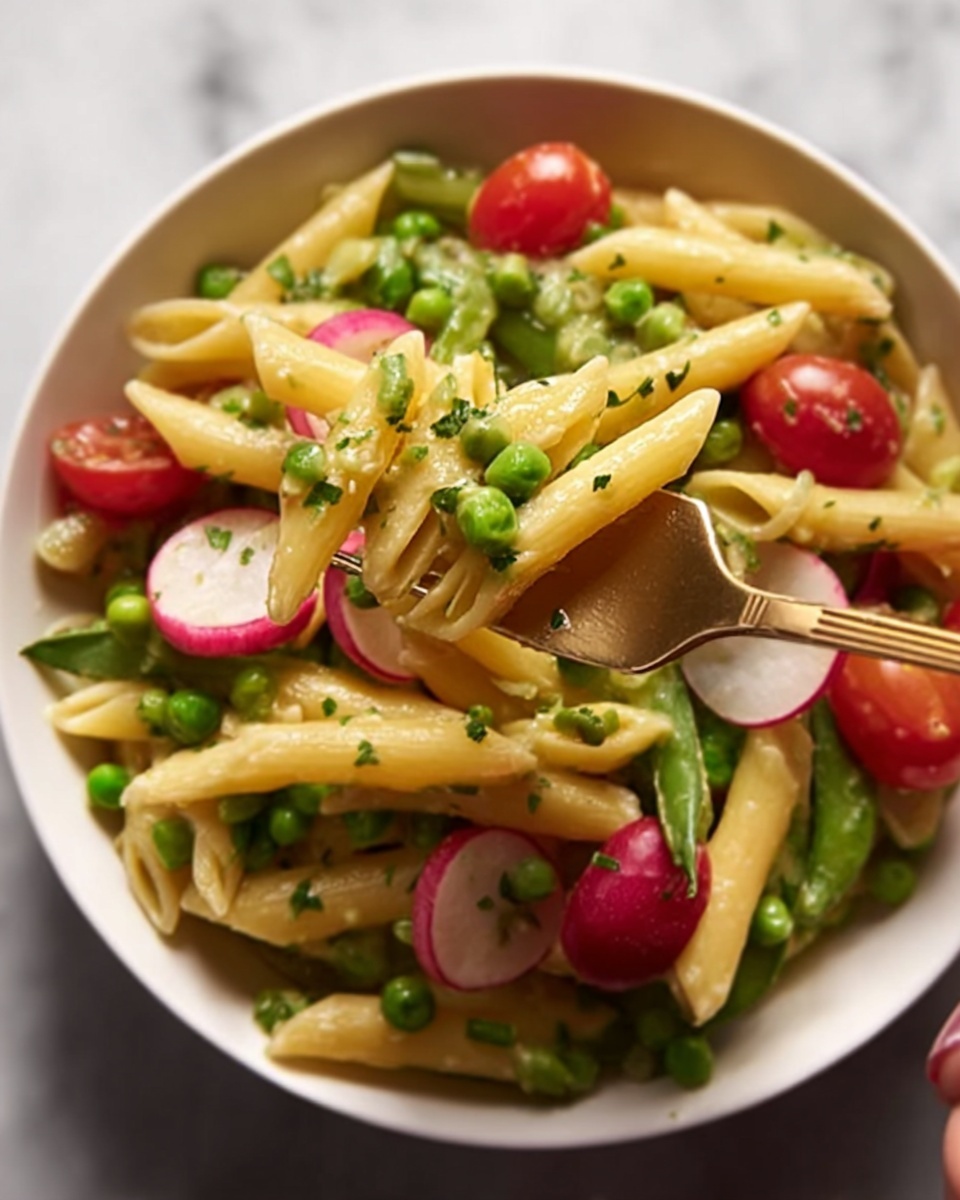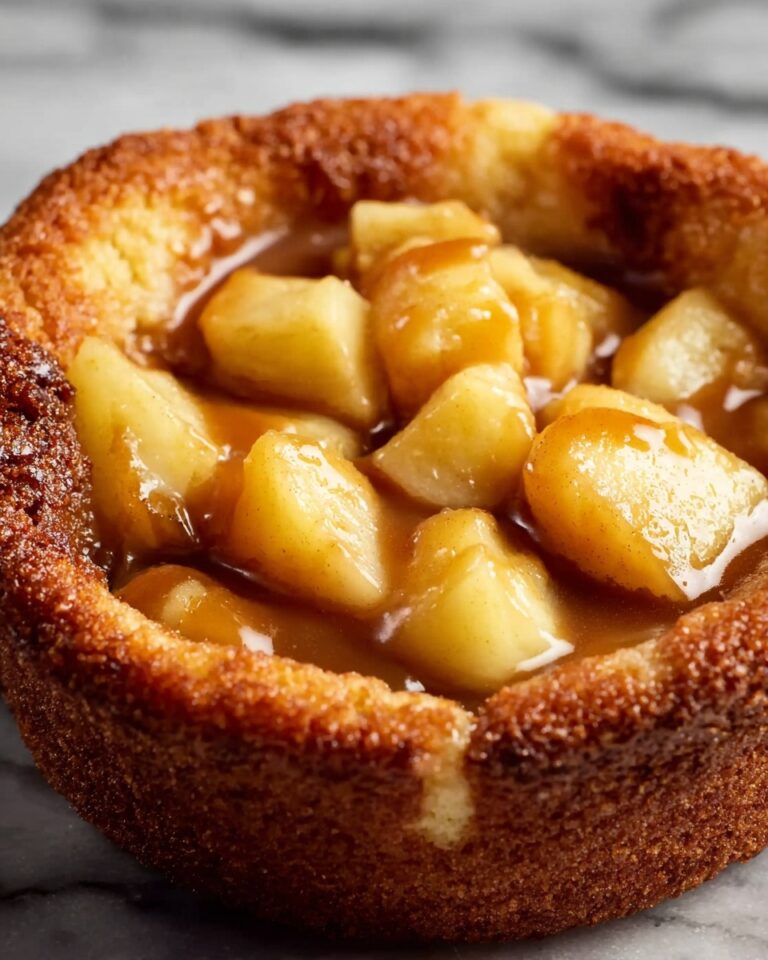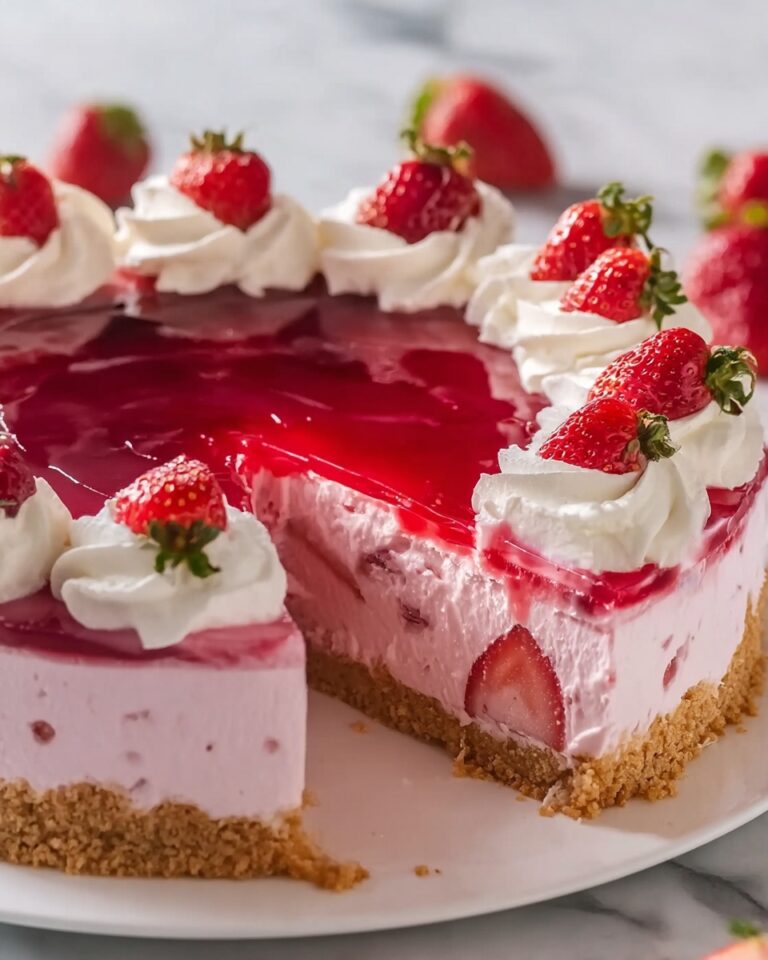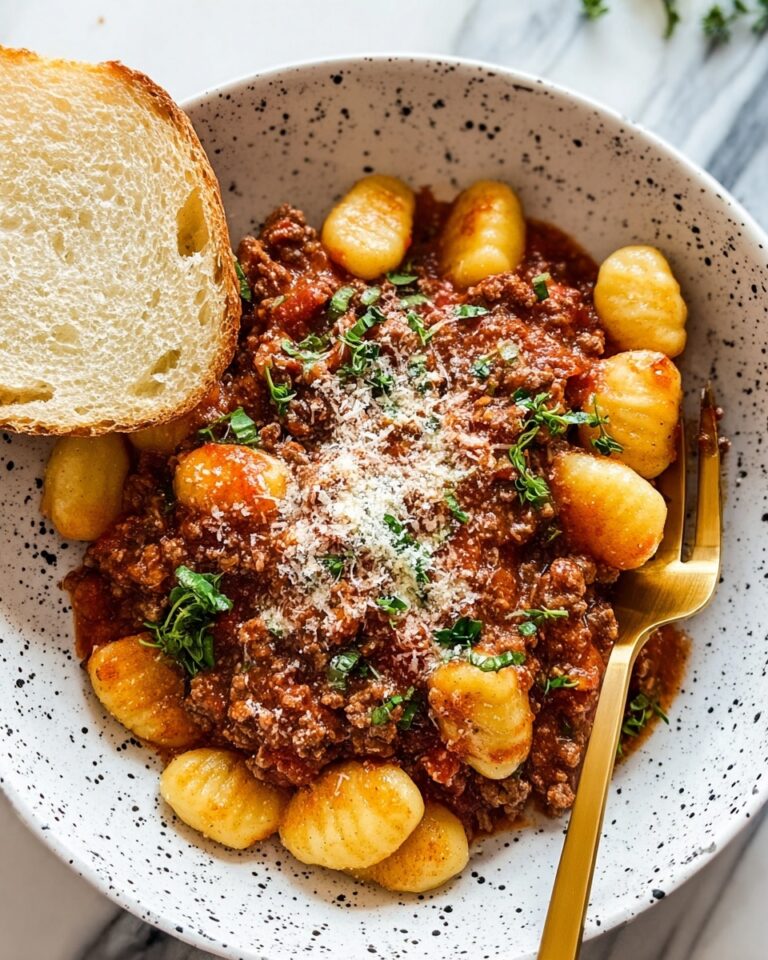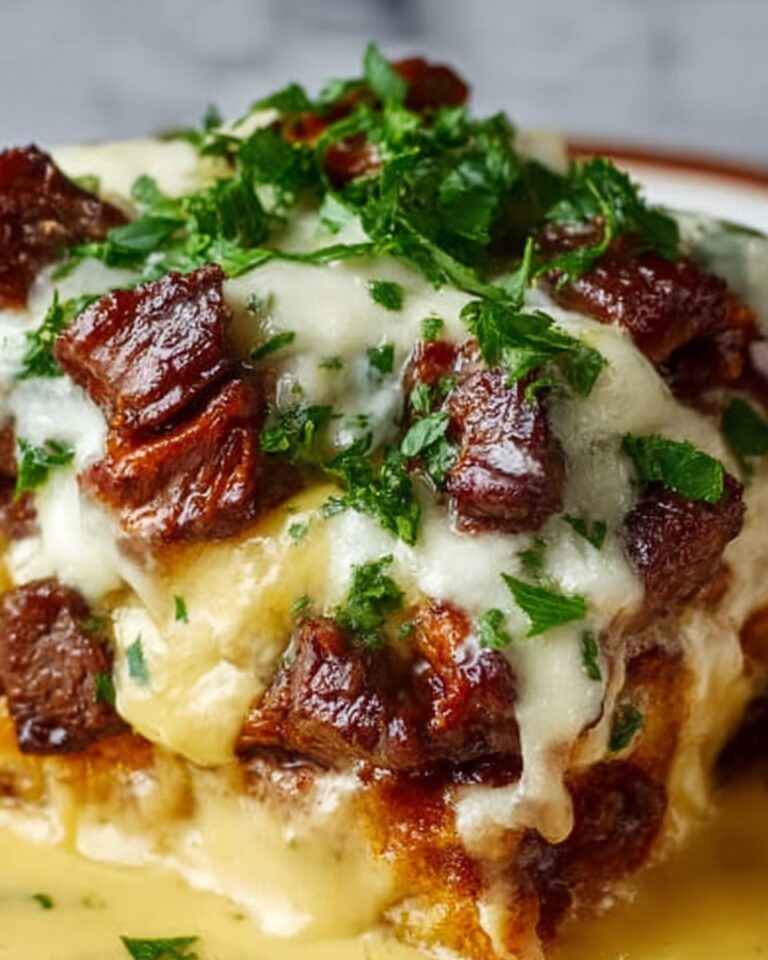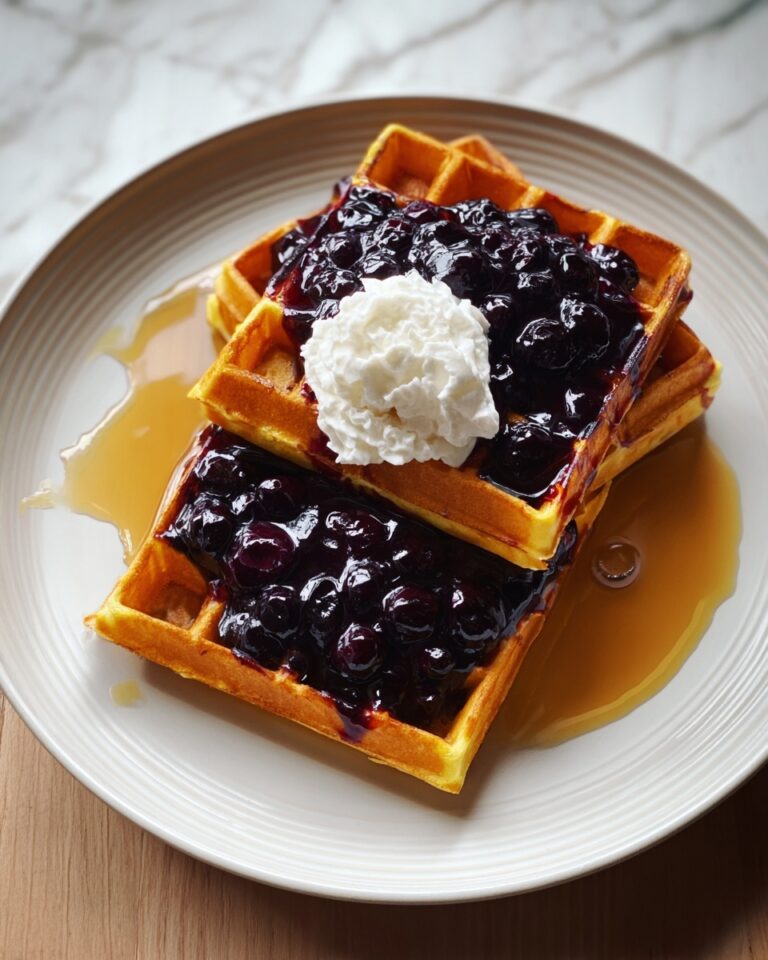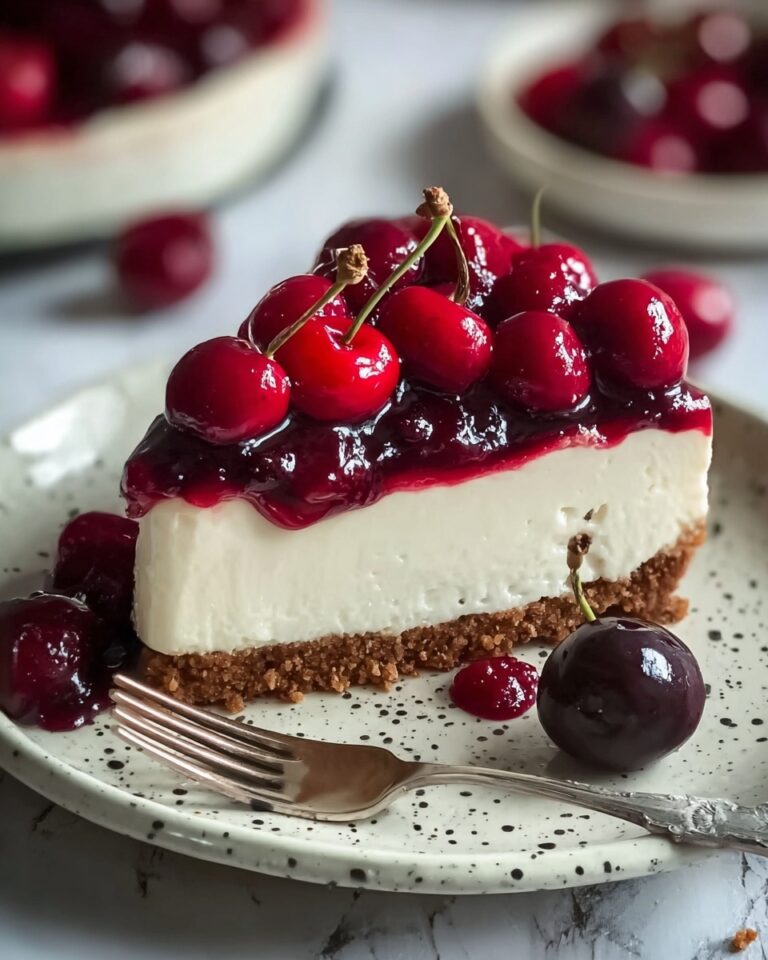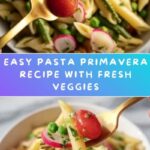Pasta Primavera Recipe is a celebration of fresh, vibrant vegetables combined with perfectly cooked pasta to create a dish that’s as colorful as it is delicious. This versatile and satisfying meal brings together crisp bell peppers, zucchini, broccoli, and peas with tender pasta tossed in a light, flavorful sauce that can be creamy or simple depending on your mood. Whether you’re looking for a quick weeknight dinner or a stunning dish to impress guests, this Pasta Primavera Recipe balances freshness and comfort in every bite.
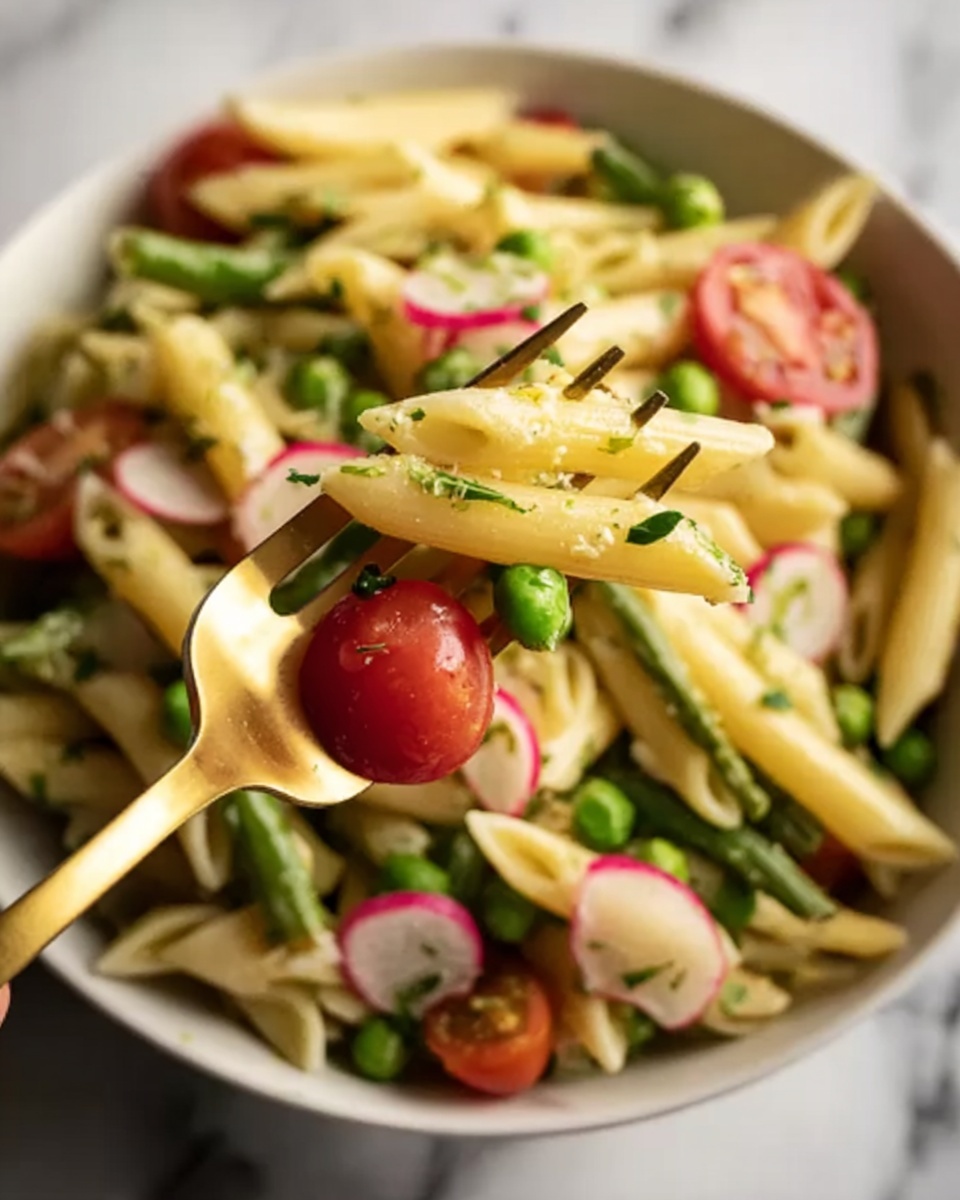
Ingredients You’ll Need
The beauty of this Pasta Primavera Recipe lies in its fresh and uncomplicated ingredients. Each item plays a crucial role, whether it’s adding texture, flavor, or that pop of color that makes this dish so inviting.
- 12 oz pasta: Choose penne, fettuccine, or your favorite shape to hold the sauce beautifully.
- 2 tablespoons olive oil: The foundation for sautéing that enhances the vegetables’ natural flavors.
- 1 small onion, chopped: Adds a gentle sweetness and depth to the base of the sauce.
- 3 garlic cloves, minced: Brings a punch of savory aroma that wakes up the palate.
- 1 red bell pepper, sliced: Offers vibrant color and a mild, sweet crunch.
- 1 yellow bell pepper, sliced: Adds brightness and balances with the red pepper.
- 1 zucchini, sliced: Softens nicely when cooked, providing subtle freshness.
- 1 small broccoli head, cut into florets: Introduces a satisfying bite and earthy flavor.
- 1 cup cherry tomatoes, halved: Bursts with juicy sweetness that contrasts with the veggies.
- 1 cup peas (fresh or frozen): A tender pop of sweetness and beautiful green color.
- 1/4 teaspoon red pepper flakes (optional): Adds a gentle heat for those who like a little kick.
- 1/2 cup vegetable or chicken broth: Creates a light sauce that ties everything together.
- 1/2 cup heavy cream (optional): For a richer, creamier take on the dish if you’re feeling indulgent.
- 1/2 cup grated Parmesan cheese: Brings savory depth and that perfect cheesy finish.
- Salt and pepper, to taste: Essential seasonings that elevate every ingredient.
- Fresh basil or parsley, chopped (for garnish): Adds a fresh, herbaceous note just before serving.
- Lemon wedges: Your secret weapon for a bright, zesty touch that enhances all the flavors.
How to Make Pasta Primavera Recipe
Step 1: Prepare Your Pasta
Bring a large pot of salted water to a boil and add your chosen pasta. Cook according to package instructions until al dente—this is key so the pasta maintains a slight bite and doesn’t become mushy once combined with the vegetables. Drain the pasta, saving about ½ cup of the pasta water for later.
Step 2: Sauté Aromatics
Heat olive oil in a large skillet over medium heat. Add the chopped onion and sauté for 3-4 minutes until translucent, then stir in the minced garlic. Cook just until fragrant, about 30 seconds, being careful not to let it burn. This creates a flavorful foundation that enhances the entire dish.
Step 3: Cook the Vegetables
Add the sliced red and yellow bell peppers, zucchini, and broccoli florets to the skillet. Sauté for 5-7 minutes, stirring occasionally, until the vegetables are tender but still crisp. Toss in the halved cherry tomatoes and peas in the last 2 minutes so they retain their bright color and fresh taste.
Step 4: Create the Sauce
Pour in the vegetable or chicken broth along with the red pepper flakes if using. Let it simmer for a few minutes to reduce slightly. For a creamy version, stir in the heavy cream now and allow it to warm through, melding into a luscious, smooth sauce.
Step 5: Combine Pasta and Sauce
Add the cooked pasta to the skillet with the vegetables and sauce. Toss everything together gently to coat the pasta completely. If the sauce seems too thick, add a splash of the reserved pasta water to loosen it. Stir in the grated Parmesan cheese until melted and well combined. Season with salt and pepper to taste.
How to Serve Pasta Primavera Recipe
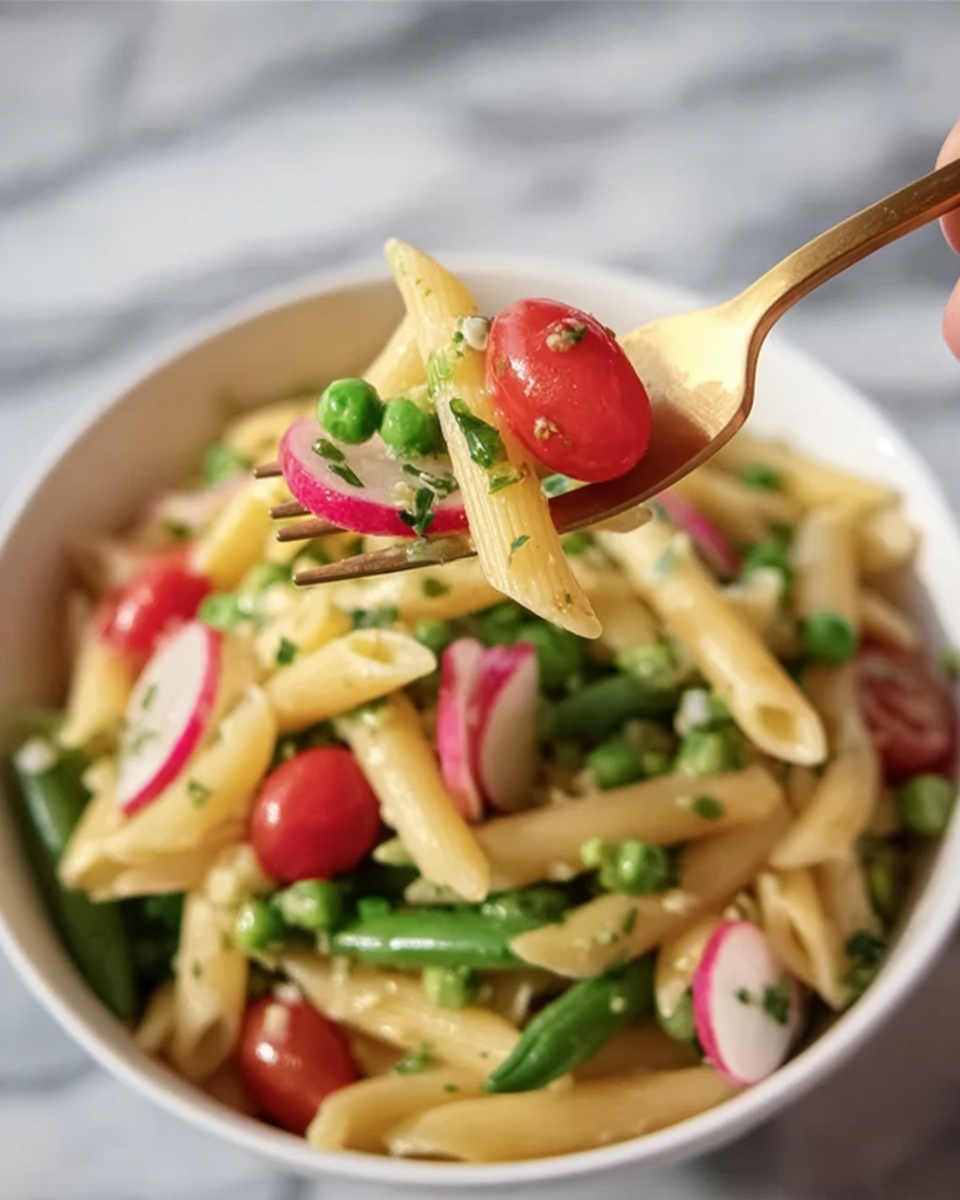
Garnishes
Fresh herbs like basil or parsley sprinkled over the top add a burst of color and aroma that make each bite even more inviting. Don’t forget to serve with lemon wedges on the side; a squeeze of lemon juice just before eating brightens the entire dish beautifully.
Side Dishes
Pasta Primavera pairs wonderfully with a simple green salad tossed with vinaigrette for a light contrast. For something heartier, warm crusty bread or garlic bread makes an excellent companion to mop up every bit of the delicious sauce.
Creative Ways to Present
Serve this Pasta Primavera Recipe in individual shallow bowls to showcase all the colorful veggies. For a festive touch, garnish each serving with extra Parmesan and a drizzle of high-quality olive oil. You can even add toasted pine nuts or a sprinkle of chili flakes for extra texture and flavor.
Make Ahead and Storage
Storing Leftovers
Store any leftover Pasta Primavera Recipe in an airtight container in the refrigerator. It’s best eaten within 2-3 days to enjoy the vegetables when they’re still fresh and vibrant.
Freezing
While it’s possible to freeze this dish, some vegetables might lose their texture upon thawing. If you must freeze, portion into airtight containers and consume within one month for best flavor. Thaw overnight in the fridge before reheating.
Reheating
Reheat leftovers gently on the stovetop over low heat with a splash of broth or water to keep the sauce creamy and prevent sticking. Microwaving works too, but do so in short intervals, stirring in between to maintain even warmth and texture.
FAQs
Can I use other types of pasta for the Pasta Primavera Recipe?
Absolutely! This recipe is very flexible. Penne, fettuccine, spaghetti, or even farfalle all work well since the sauce clings nicely to various shapes.
Is it possible to make this dish vegan?
Yes, to make the Pasta Primavera Recipe vegan, simply omit the Parmesan cheese or substitute it with a plant-based cheese alternative and use vegetable broth instead of chicken broth.
How do I make the Pasta Primavera Recipe gluten-free?
Simply swap regular pasta for your favorite gluten-free pasta. Most gluten-free varieties cook similarly and will pair beautifully with the vegetable sauce.
Can I prepare the vegetables ahead of time?
Definitely! Chopping and slicing the vegetables a day ahead will speed things up. Just keep them in an airtight container in the fridge to maintain freshness.
What’s the best way to add extra protein to this dish?
Grilled chicken, sautéed shrimp, or even crispy tofu cubes are fantastic options to turn this Pasta Primavera Recipe into a more filling meal without overpowering the fresh vegetable flavors.
Final Thoughts
I truly hope you give this Pasta Primavera Recipe a try because it combines the simple pleasure of fresh veggies with satisfying pasta in the most delightful way. It’s a bright, wholesome dish that’s perfect any time you want a meal that’s both comforting and bursting with natural flavors. Once you make it, I guarantee it will become a cherished staple in your kitchen just like it is in mine!
Print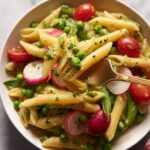
Pasta Primavera Recipe
- Prep Time: 10 minutes
- Cook Time: 15 minutes
- Total Time: 25 minutes
- Yield: 4 servings
- Category: Main Course
- Method: Stovetop
- Cuisine: Italian
- Diet: Vegetarian
Description
Pasta Primavera is a vibrant and fresh Italian-inspired dish featuring tender pasta tossed with a medley of sautéed vegetables like bell peppers, zucchini, broccoli, and cherry tomatoes. Lightly seasoned and finished with Parmesan cheese and fresh herbs, this dish can be made creamy or traditional, perfect for a quick and wholesome meal.
Ingredients
Vegetables
- 1 small onion, chopped
- 3 garlic cloves, minced
- 1 red bell pepper, sliced
- 1 yellow bell pepper, sliced
- 1 zucchini, sliced
- 1 small broccoli head, cut into florets
- 1 cup cherry tomatoes, halved
- 1 cup peas (fresh or frozen)
Pasta and Liquids
- 12 oz pasta (penne, fettuccine, or your choice)
- 2 tablespoons olive oil
- 1/4 teaspoon red pepper flakes (optional)
- 1/2 cup vegetable or chicken broth
- 1/2 cup heavy cream (optional for a creamy version)
Finishing
- 1/2 cup grated Parmesan cheese
- Salt and pepper, to taste
- Fresh basil or parsley, chopped (for garnish)
- Lemon wedges (for serving)
Instructions
- Cook the pasta: Bring a large pot of salted water to a boil. Add the pasta and cook according to package instructions until al dente. Drain and set aside, reserving about 1/2 cup of pasta water.
- Sauté the aromatics: In a large skillet, heat olive oil over medium heat. Add chopped onion and minced garlic and sauté until fragrant and translucent, about 3-4 minutes.
- Add the vegetables: Add the sliced red and yellow bell peppers, zucchini, broccoli florets, and peas to the skillet. Stir and cook for about 5-7 minutes until vegetables are tender yet crisp.
- Incorporate cherry tomatoes and seasoning: Add halved cherry tomatoes and red pepper flakes if using. Cook for an additional 2 minutes until tomatoes soften slightly.
- Add broth and optional cream: Pour in the vegetable or chicken broth, bringing it to a gentle simmer. If making creamy, stir in the heavy cream and cook until heated through and slightly thickened, about 2-3 minutes.
- Toss pasta with veggies: Add the cooked pasta into the skillet with vegetables, tossing well to combine. If the mixture seems dry, add reserved pasta water a little at a time to loosen the sauce.
- Finish with cheese and seasoning: Stir in grated Parmesan cheese and season with salt and freshly ground black pepper to taste.
- Serve and garnish: Plate the pasta primavera and garnish with fresh chopped basil or parsley. Serve with lemon wedges on the side to squeeze over the dish for brightness.
Notes
- For a vegan version, omit the Parmesan and heavy cream or substitute with plant-based alternatives.
- You can use any pasta shape you prefer, though penne or fettuccine work best for holding the sauce.
- If you like more heat, increase the red pepper flakes or add crushed chili.
- Fresh vegetables can be swapped seasonally, such as asparagus or green beans.
- Reserve some pasta water to adjust the sauce consistency as needed.

